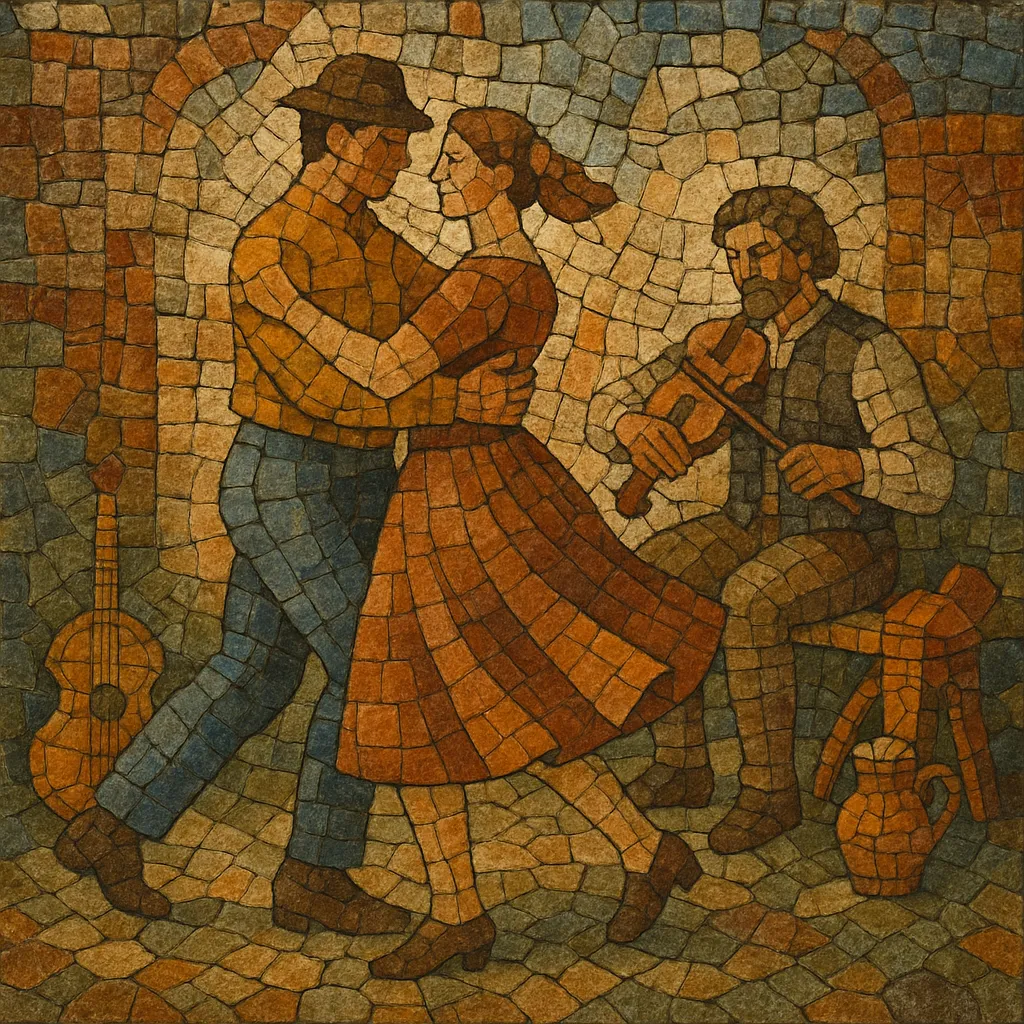Hambo is a Swedish couple-dance music form in 3/4 time, closely related to the older polska tradition but standardized and popularized in the late 19th century.
It is danced and played with a characteristic lilt: a strong, grounded first beat, a buoyant second beat, and a slightly lighter or shortened third beat that propels the turn of the couple.
Traditional hambo tunes are typically performed by fiddles, nyckelharpa, and accordion, often in AABB structures, and feature modal colors (frequently Dorian or Mixolydian) with simple, dance-forward harmonies.
Today, hambo remains a staple of Swedish folk dance gatherings and the repertoires of spelmanslag (fiddler ensembles), as well as contemporary Nordic folk bands.
Hambo emerged in Sweden during the late 19th century as a codified partner dance and tune type derived from the broader polska family. While polska itself dates back centuries, the specific step patterns and musical phrasing of hambo were shaped by local dance leaders, fiddlers, and community practices, especially in regions like Dalarna and Hälsingland.
Around the 1890s, hambo became widely popular across Sweden as social dance culture flourished. Dance teachers and folk organizations helped standardize the steps, which emphasized turning couples traveling counter-clockwise around the floor. Concurrently, musicians consolidated a recognizable hambo rhythmic feel in 3/4, supporting the dance’s characteristic glide and swing.
Even as urban popular music diversified, hambo persisted in rural communities and at folk gatherings. Spelmanslag ensembles kept the repertoire vibrant, passing down tunes orally and through local tune books. The music’s modal flavor and simple harmonic scaffolding made it both accessible and distinct.
The Nordic folk revival from the late 20th century onward brought renewed attention to hambo. Concert groups and studio recordings introduced hambo tunes to international audiences, while dance associations continued teaching the form. Today, hambo is simultaneously a living social dance and a concert repertoire item, performed by traditional fiddlers and innovative folk bands alike.


